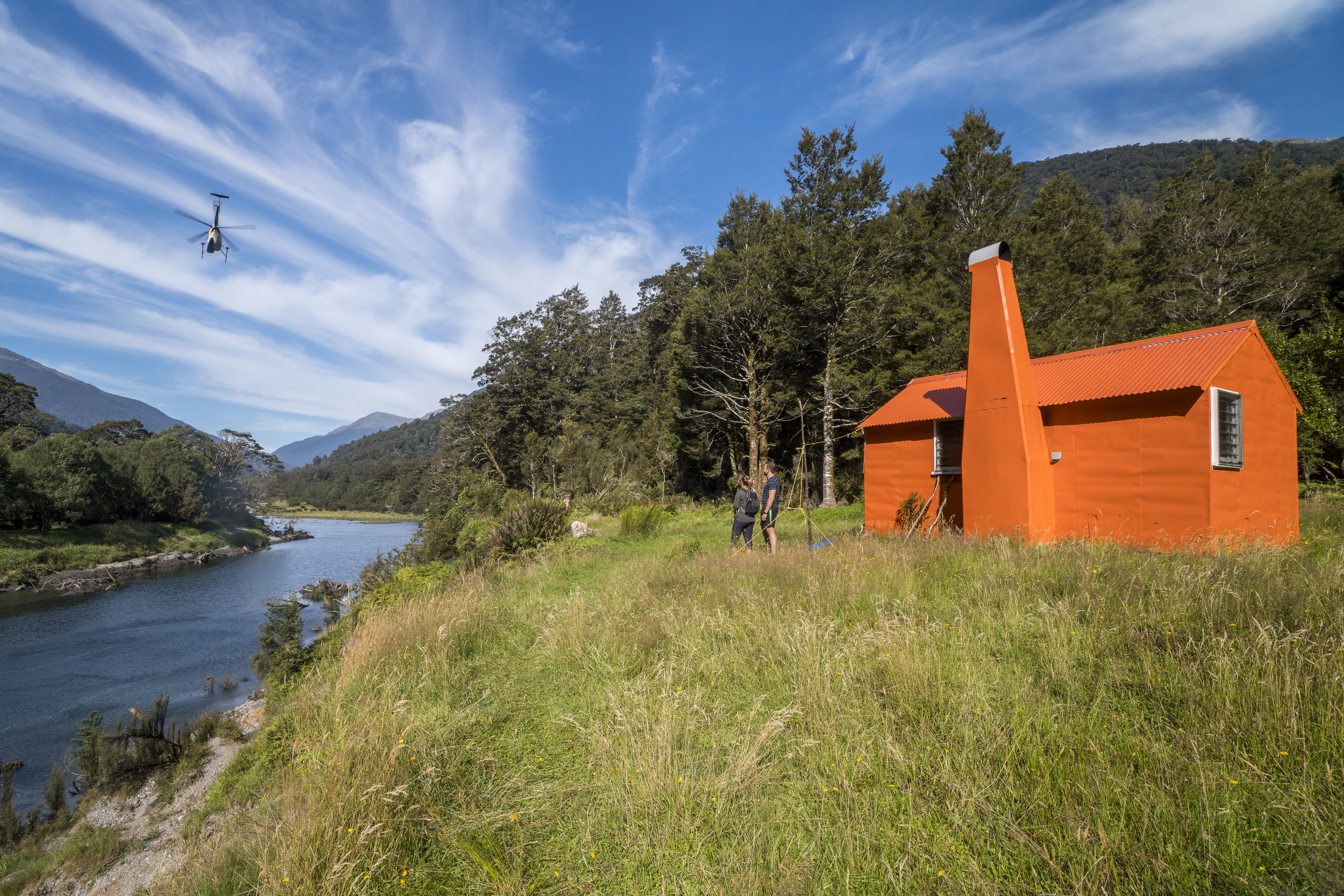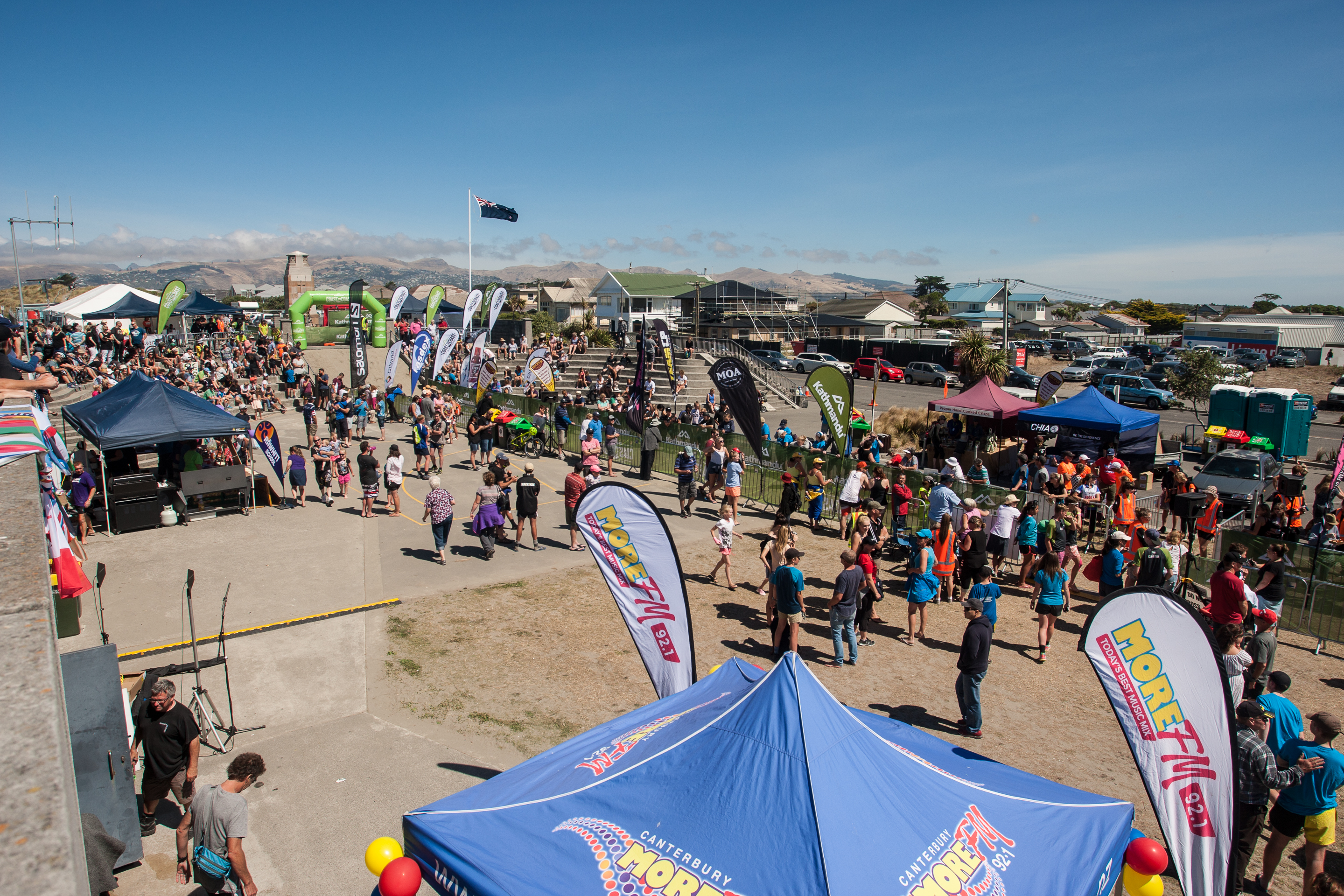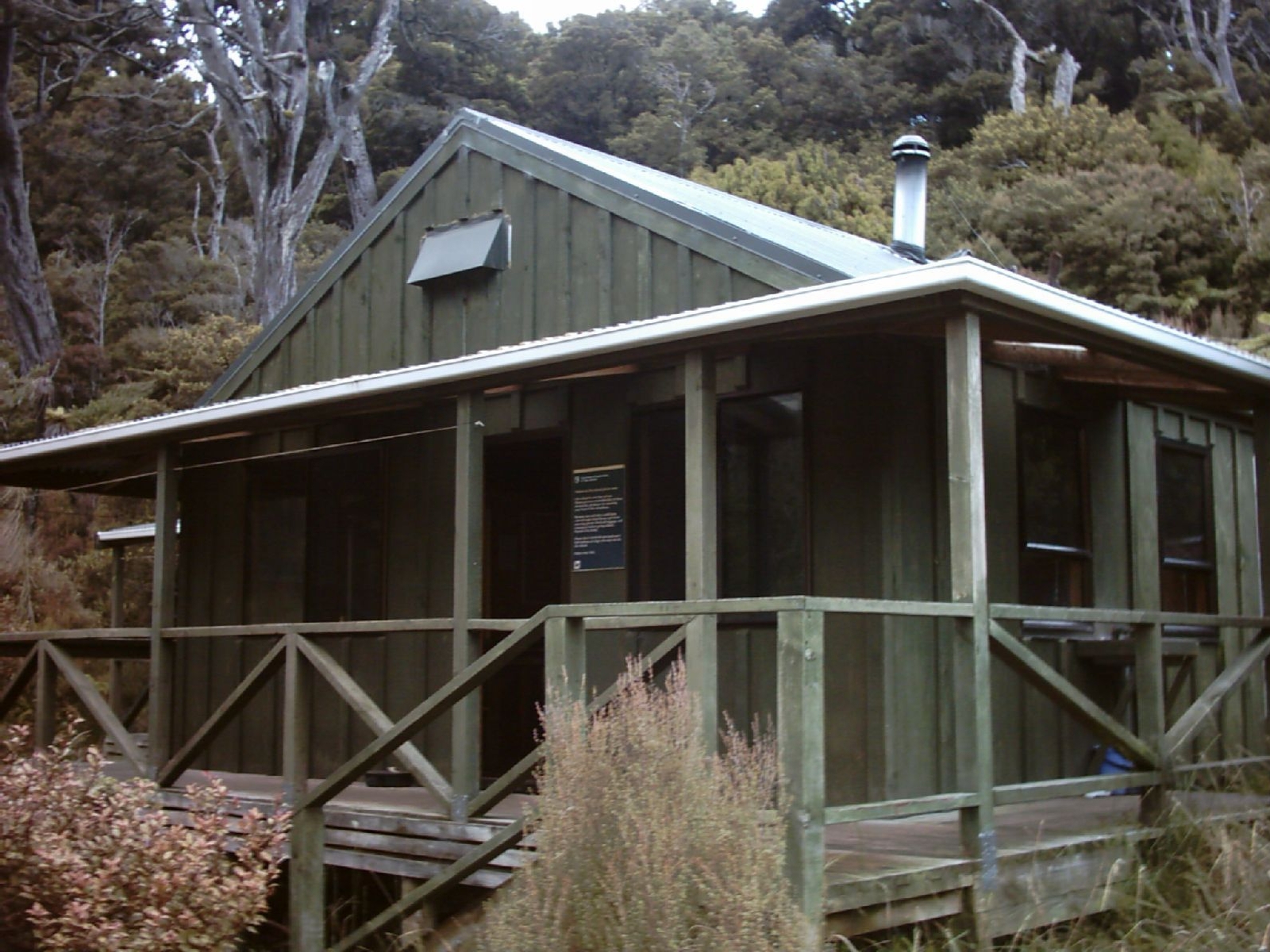|
Deception River
The Deception River is a river in New Zealand. It is a tributary of the West Coast's Ōtira River, flowing generally north for from its source on the slopes of Mount Franklin. It passes close to Goat Pass, which gives access to the Mingha River. Almost the entire length of the river is within the Arthur's Pass National Park. The river was once called "Goat Creek". It was surveyed about 1900 as a possible alternative route for the Midland Line, and the surveyor warned that the water levels could be deceiving. About three months later, a flood from the river into the Otira Valley caused several thousand dollars' worth of damage to the railway, and the river was given its current name. The Department of Conservation maintains a tramping track alongside the river, and it is part of the annual Coast to Coast race. Backcountry huts are available for trampers; one near Goat Pass and another a little further down the river. See also *List of rivers of New Zealand This is a li ... [...More Info...] [...Related Items...] OR: [Wikipedia] [Google] [Baidu] |
New Zealand
New Zealand ( mi, Aotearoa ) is an island country in the southwestern Pacific Ocean. It consists of two main landmasses—the North Island () and the South Island ()—and over 700 smaller islands. It is the sixth-largest island country by area, covering . New Zealand is about east of Australia across the Tasman Sea and south of the islands of New Caledonia, Fiji, and Tonga. The country's varied topography and sharp mountain peaks, including the Southern Alps, owe much to tectonic uplift and volcanic eruptions. New Zealand's capital city is Wellington, and its most populous city is Auckland. The islands of New Zealand were the last large habitable land to be settled by humans. Between about 1280 and 1350, Polynesians began to settle in the islands and then developed a distinctive Māori culture. In 1642, the Dutch explorer Abel Tasman became the first European to sight and record New Zealand. In 1840, representatives of the United Kingdom and Māori chiefs ... [...More Info...] [...Related Items...] OR: [Wikipedia] [Google] [Baidu] |
Mingha River
The Mingha River is a river of the Canterbury Region of New Zealand's South Island. It flows east then south from its origin on the slopes of Mt Temple, meeting the Bealey River south of Arthur's Pass. Together with Goat Pass, elevation , and the Deception River, the Mingha valley forms a route across the Southern Alps known as the Mingha/Deception. It is used for the mountain running segment of the annual Coast to Coast race. See also *List of rivers of New Zealand This is a list of all waterways named as rivers in New Zealand. A * Aan River * Acheron River (Canterbury) * Acheron River (Marlborough) * Ada River * Adams River * Ahaura River * Ahuriri River * Ahuroa River * Akatarawa River * Ākiti ... References * *New Zealand 1:50000 topographic map sheet BV20 - Otira Rivers of Canterbury, New Zealand Arthur's Pass National Park Rivers of New Zealand {{CanterburyNZ-river-stub ... [...More Info...] [...Related Items...] OR: [Wikipedia] [Google] [Baidu] |
Rivers Of The West Coast, New Zealand
A river is a natural flowing watercourse, usually freshwater, flowing towards an ocean, sea, lake or another river. In some cases, a river flows into the ground and becomes dry at the end of its course without reaching another body of water. Small rivers can be referred to using names such as creek, brook, rivulet, and rill. There are no official definitions for the generic term river as applied to geographic features, although in some countries or communities a stream is defined by its size. Many names for small rivers are specific to geographic location; examples are "run" in some parts of the United States, "burn" in Scotland and northeast England, and "beck" in northern England. Sometimes a river is defined as being larger than a creek, but not always: the language is vague. Rivers are part of the water cycle. Water generally collects in a river from precipitation through a drainage basin from surface runoff and other sources such as groundwater recharge, springs, a ... [...More Info...] [...Related Items...] OR: [Wikipedia] [Google] [Baidu] |
List Of Rivers Of New Zealand
This is a list of all waterways named as rivers in New Zealand. A * Aan River * Acheron River (Canterbury) * Acheron River (Marlborough) * Ada River * Adams River * Ahaura River * Ahuriri River * Ahuroa River * Akatarawa River * Ākitio River * Alexander River * Alfred River * Allen River * Alma River * Alph River (Ross Dependency) * Anatoki River * Anatori River * Anaweka River * Anne River * Anti Crow River * Aongatete River * Aorangiwai River * Aorere River * Aparima River * Arahura River * Arapaoa River * Araparera River * Arawhata River * Arnold River * Arnst River * Aropaoanui River * Arrow River * Arthur River * Ashburton River / Hakatere * Ashley River / Rakahuri * Avoca River (Canterbury) * Avoca River (Hawke's Bay) * Avon River / Ōtākaro * Avon River (Marlborough) * Awakari River * Awakino River (Canterbury) and its East and West branches * Awakino River (Northland) * Awakino River (Waikato) * Awanui River * Awapoko River * Awarau River * A ... [...More Info...] [...Related Items...] OR: [Wikipedia] [Google] [Baidu] |
Backcountry Hut
A wilderness hut, bothy, backcountry hut, or backcountry shelter is a free, primitive mountain hut for temporary accommodation, usually located in wilderness areas, national parks and along backpacking (wilderness), backpacking and hiking routes. They are found in many parts of the world, such as Finland, Sweden, Norway, northern Russia, the Alps, the Pyrenees, Scotland, Australia, New Zealand, Canada, and the United States. Huts are basic and unmanned, without running water. Bothy A bothy is a basic shelter, usually left unlocked and available for anyone to use free of charge. They are found in remote mountainous areas of Scotland, Northern England, Northern Ireland, Wales and the Isle of Man. Most are ruined buildings which have been restored to a basic standard, providing a windproof and watertight shelter. They vary in size from little more than a large box up to two-storey cottages. They usually have designated sleeping areas, which commonly are either an upstairs room or ... [...More Info...] [...Related Items...] OR: [Wikipedia] [Google] [Baidu] |
New Zealand Department Of Conservation
The Department of Conservation (DOC; Māori: ''Te Papa Atawhai'') is the public service department of New Zealand charged with the conservation of New Zealand's natural and historical heritage. An advisory body, the New Zealand Conservation Authority (NZCA) is provided to advise DOC and its ministers. In addition there are 15 conservation boards for different areas around the country that provide for interaction between DOC and the public. Function Overview The department was formed on 1 April 1987, as one of several reforms of the public service, when the ''Conservation Act 1987'' was passed to integrate some functions of the Department of Lands and Survey, the Forest Service and the Wildlife Service. This act also set out the majority of the department's responsibilities and roles. As a consequence of Conservation Act all Crown land in New Zealand designated for conservation and protection became managed by the Department of Conservation. This is about 30% of New Z ... [...More Info...] [...Related Items...] OR: [Wikipedia] [Google] [Baidu] |
Coast To Coast (race)
The Coast to Coast is a non-standard multisport competition held annually in New Zealand. It is run from the west coast to the east coast of the South Island, and features running, cycling and kayaking elements over a total of . It starts in Kumara Beach and traditionally finished in the Christchurch suburb of Sumner, but since 2015 finishes in New Brighton. The event was created in 1983 by Christchurch personality Robin Judkins, who sold the rights to Queenstown-based tourism company Trojan Holdings in 2013. Richard Ussher took over from Judkins as race director in 2015. History The first Coast to Coast race was organised in 1983 by New Zealand sportsman Robin Judkins who had already been organising the three-day Alpine Ironman. The original race featured only 79 competitors and was considered a largely local event. Initially a two-day event for individuals and teams, and one-day event for individuals was added in 1987 known as the "Longest Day". Over the years, the ra ... [...More Info...] [...Related Items...] OR: [Wikipedia] [Google] [Baidu] |
Tramping In New Zealand
Tramping, known elsewhere as backpacking, rambling, hill walking or bushwalking, is a popular activity in New Zealand. Tramping is defined as a recreational activity involving walking over rough country. Trampers often carry a backpack and wet-weather gear, and may also carry equipment for cooking and sleeping. History Alpine climbing has been a recreational activity from the early days of European settlement, and possibly earlier. From the 1950s tracks, huts and bridges were built in the forested areas of New Zealand to support hunters culling introduced deer species which had become a threat to the biodiversity of New Zealand. As tramping became popular these facilities were increasingly used by trampers. In later years tramping has become popular for both local and foreign tourists. Tramping clubs were formed in many towns, cities and universities with regular trips being organised. The clubs sometimes own a bus to transport club members to the tracks. Tramping tracks A n ... [...More Info...] [...Related Items...] OR: [Wikipedia] [Google] [Baidu] |
Department Of Conservation (New Zealand)
The Department of Conservation (DOC; Māori: ''Te Papa Atawhai'') is the public service department of New Zealand charged with the conservation of New Zealand's natural and historical heritage. An advisory body, the New Zealand Conservation Authority (NZCA) is provided to advise DOC and its ministers. In addition there are 15 conservation boards for different areas around the country that provide for interaction between DOC and the public. Function Overview The department was formed on 1 April 1987, as one of several reforms of the public service, when the ''Conservation Act 1987'' was passed to integrate some functions of the Department of Lands and Survey, the Forest Service and the Wildlife Service. This act also set out the majority of the department's responsibilities and roles. As a consequence of Conservation Act all Crown land in New Zealand designated for conservation and protection became managed by the Department of Conservation. This is about 30% of New Z ... [...More Info...] [...Related Items...] OR: [Wikipedia] [Google] [Baidu] |
Midland Line, New Zealand
The Midland line is a 212 km section of railway between Rolleston and Greymouth in the South Island of New Zealand. The line features five major bridges, five viaducts and 17 tunnels, the longest of which is the Otira tunnel. It is the route of the popular TranzAlpine passenger train. History Railway development in the South Island in the 1870s was concentrated on a main line linking the established centres of Christchurch, Timaru, Dunedin and Invercargill and light, easily constructed branch lines serving the arable plains; (see Vogel Era). These later included a branch to Springfield which was reached by January 1880. In 1882 the East and West Coast Railway League was formed and in 1884 a Royal Commission, although fully aware of the construction difficulties of the Waimakariri Valley-Arthurs Pass route, as compared with the somewhat easier but longer Hurunui Valley-Harpers Pass route, chose the more direct route. The construction of the line was rejected in 1883 ... [...More Info...] [...Related Items...] OR: [Wikipedia] [Google] [Baidu] |
Arthur's Pass National Park
Arthur's Pass National Park is located in the South Island of New Zealand and covers 1,185 km2 of mostly mountainous terrain. Adjacent to it lies Craigieburn Forest Park. History Arthurs Pass National Park was established in 1929, becoming the first national park in the South Island and the third in New Zealand. Land (Arthur's Pass and the Ōtira Gorge) was originally set aside under the Lands Act 1885 and the Scenery Preservation Act of 1903. This land became the foundation for the national park. With the railway built, train trips from Christchurch to the Ōtira Gorge began with day trippers visiting Arthurs Pass in 1926. Unfortunately native flowers were popular souvenirs. Some individuals chose to cut down trees to obtain rātā blooms. As a result, there was a large push to establish national park status for the area. This led to the establishment of Arthur's Pass National Park in 1929. Underfunding meant that this was initially in name only and in took a ... [...More Info...] [...Related Items...] OR: [Wikipedia] [Google] [Baidu] |
Mount Franklin (Canterbury)
Mount Franklin is located northeast of Arthur's Pass, and is the second tallest of the New Zealand mountains with this name. It forms part of the ridge of the Southern Alps. As such, it is located close to the border between the Canterbury and West Coast regions. Rising to a height of , it is located within Arthur's Pass National Park Arthur's Pass National Park is located in the South Island of New Zealand and covers 1,185 km2 of mostly mountainous terrain. Adjacent to it lies Craigieburn Forest Park. History Arthurs Pass National Park was established in 19 .... It is regarded as a good mountain to climb. References Mountains of Canterbury, New Zealand Southern Alps Arthur's Pass National Park {{CanterburyNZ-geo-stub ... [...More Info...] [...Related Items...] OR: [Wikipedia] [Google] [Baidu] |







